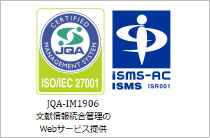ホームIMICライブラリMMWR抄訳2006年(Vol.55)筋力トレーニングの動向-米国、1998~2004年
2006/07/21Vol. 55 / No. 28
MMWR55(28): 769-772
Trends in Strength Training - United States, 1998-2004
筋力トレーニングの動向-米国、1998~2004年
筋力トレーニングは、筋力と筋肉量の増強を目的とする身体活動である。筋力トレーニングを行う成人は、行わない成人より筋肉量の減少や機能低下を防ぎ、転倒による傷害を被らない傾向にある。筋力トレーニング介入に関する研究によれば、活動的でない老人が習慣的な筋力トレーニングを始めると、数ヵ月以内に相当な筋力増を達成できると指摘している。一定の健康上の利点が筋力トレーニングによって得られることから、2010年に向かって国の健康目標は、筋力や耐久性を増強維持する身体活動を週2回以上行う成人の割合を30%まで増大することとなっている。この目標は、American College of Sports and Medicineによっても推奨されている。CDCは、米国民の年齢、人種、民族別による筋力トレーニングの年間普及率を測定するために、National Health Interview Survey(NHIS)の1998年から2004年のデータを解析した。この報告は、その分析結果について述べており、米国成人の筋力トレーニングの全国普及率は、1998年から2004年にかけて僅かに上昇したが、2004年においては、週2回以上筋力トレーニングをした人は男性21.9%、女性17.5%(年齢調整済み)に過ぎないことが報告された。これは米国の2010年目標の30%をはるかに下回っており、成人の筋力トレーニングを増やすためにさらに計画が必要であると強調している。NHISは、米国民、特定の組織に属していない集団の健康状態、医療サービスの利用、保健行動に関する面接から成り立っている。筋力トレーニングに関するデータは、1998年から2004年に毎年収集された。サンプルは30,801(1999年)から33,326(2001年)の範囲であり、回答率は69.6%(1999年)から74.3%(2002年)の範囲であった。全回答者で筋力トレーニングを週2回以上行っていると報告した年齢調整普及率は、1998年の17.7%から2004年の19.6%に有意に上昇した。1998年と2004年における差は、女性では有意で、男性では有意ではなかった。2004年に筋力トレーニングの推奨レベルを満たした人の年齢調整率は、女性より男性において有意に高かった(21.9%と17.5%)。2004年では、筋力トレーニングは65歳以上において最低の普及率(男性14.1%、女性10.7%)であった。男性と女性間の筋力トレーニング普及率は、年齢を重ねると共に有意に低下した(p<0.001)。しかし、65歳以上の男性では、1998年から2004年の普及率は、有意に上昇し、25歳から34歳、45歳から64歳、65歳以上の女性においても同時期で有意に上昇した。
References
- Seguin R, Nelson ME. The benefits of strength training for older adults. Am Prev Med 2003;25(Suppl 2):S14-9.
- Chandler JM, Duncan PW, Kochersberger G, Studenski S. Is lower extremity strength gain associated with improvement in physical performance and disability in frail, community-dwelling elders? Arch Phy Med Rehabil 1998;79:24-30.
- Butler M, Norton R, Lee-Joe T, Coggan C. Preventing falls and fallrelated injuries among older people living in institutions: current practice and future opportunities. NZ Med J 1998;111:359-61.
- Jette A, Lachman M, Giorgetti M, et al. Exercise: it’s never too late: the strong-for-life program. Am J Public Health 1999;89:66-72.
- US Department of Health and Human Services. Healthy people 2010, 2nd ed. With understanding and improving health and objectives for improving health. 2 vols. Washington, DC: US Government Printing Office; 2000.
- American College of Sports Medicine. American College of Sports Medicine Position Stand. The recommended quantity and quality of exercise for developing and maintaining cardiorespiratory and muscular fitness, and flexibility in healthy adults. Med Sci Sports Exerc 1998;30:975-91.
- US Department of Health and Human Services. National Health Interview Survey (NHIS): public use data release. Hyattsville, MD: US Department of Health and Human Services; 2006. Available at <http://www.cdc.gov/nchs/nhis.htm>.
- Klein RJ, Shoenborn CA. Age adjustment using the 2000 projected U.S. population. Healthy people statistical notes, No. 20. Hyattsville, MD: National Center for Health Statistics; 2001.
- Robert Wood Johnson Foundation. National blueprint: increasing physical activity among adults age 50 and older. Princeton, NJ: Robert Wood Johnson Foundation; 2001.
- Seguin R, Epping J, Bloch R, Buchner D, Nelson M. Growing stronger: strength training for older adults. Washington, DC: Tufts University; 2002. Available at <http://www.cdc.gov/nccdphp/dnpa/physical/growing_stronger/growing_stronger.pdf>.
Copyright © 2013 International Medical Information Center. All Rights Reserved.












